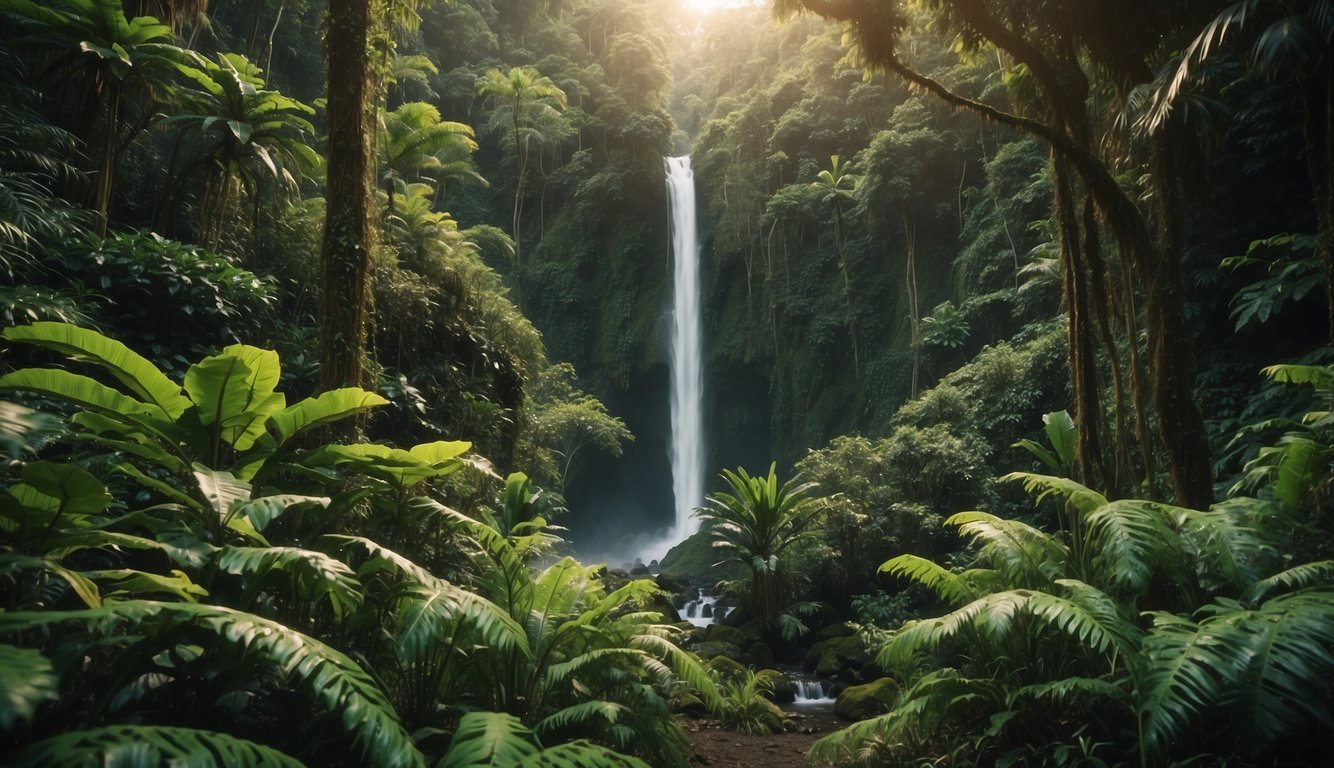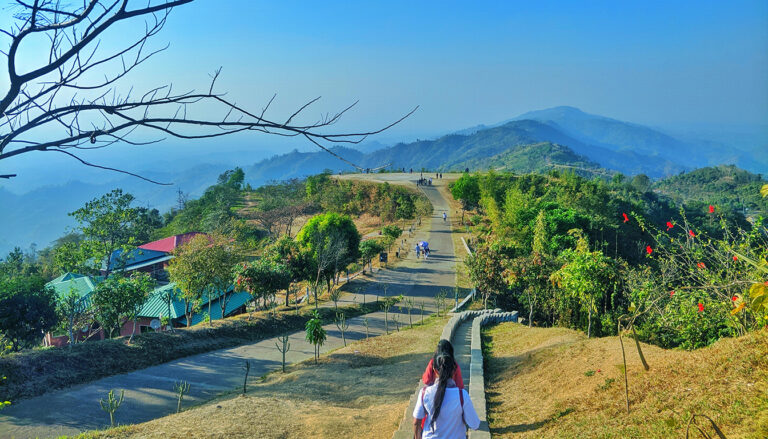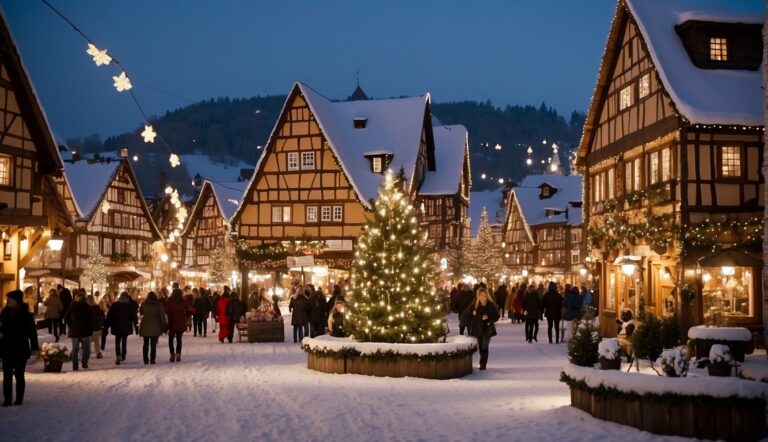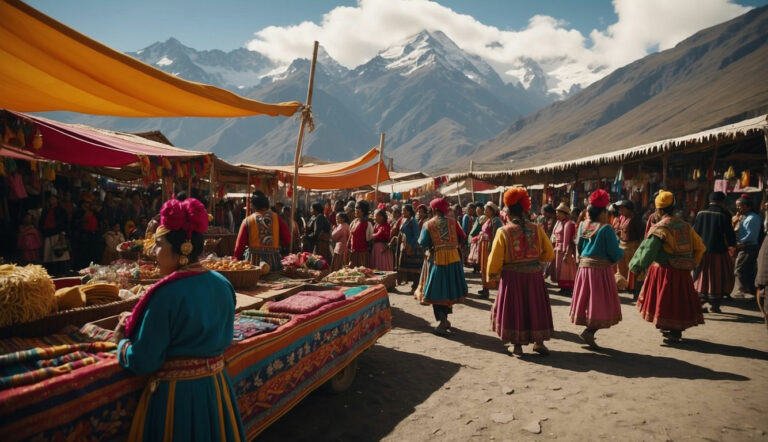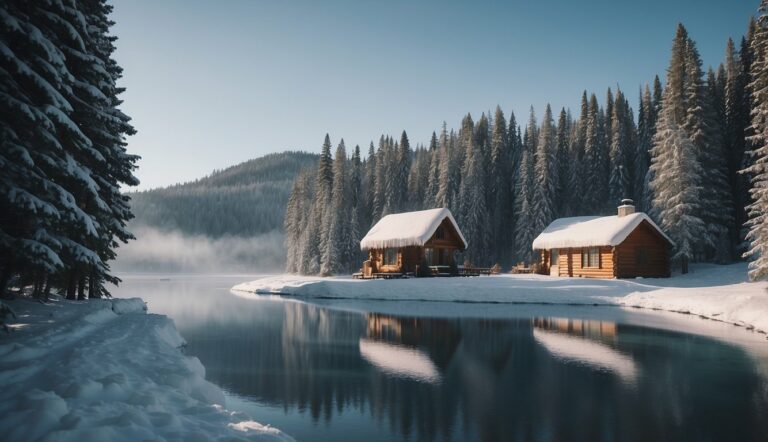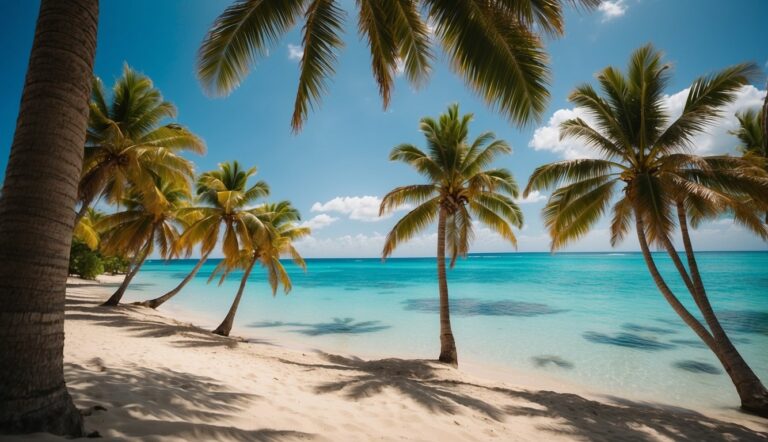Christmas in Costa Rica: Unveiling Tropical Festive Traditions
Christmas in Costa Rica is a vibrant and heartfelt season, echoing the nation’s deep-rooted traditions and warm familial bonds. As a predominantly Catholic country, Costa Rica embraces Christmas with religious reverence and communal joy.
This period is characterized by a blend of North American and Spanish influences, adapted into unique local customs that encapsulate the spirit of ‘Pura Vida’ or ‘Pure Life,’ a phrase that captures the Costa Rican ethos.

The season is marked by an extensive preparation for Christmas Eve, known as ‘Noche Buena,’ which serves as the pinnacle of the holiday celebrations.
Families come together to adorn their homes with festive decorations, cypress trees, and intricate Nativity scenes that showcase the story of the birth of Jesus.
The air is filled with the aroma of traditional tamales, a staple holiday dish meticulously prepared by family members.
The convivial atmosphere extends beyond the household as communities across the nation participate in a series of public festivities, including the Festival de la Luz, with stunning light displays and parades.

History and Significance
Costa Rica, part of Central America, embraces Christmas with a blend of Christian traditions deeply rooted in its history. As a predominantly Catholic country, the celebration of Jesus’ birth is central to Costa Rican Christmas festivities.
The Nativity scene, or “pasito”, is a cherished component, originating in the colonial era when figurines were imported from Guatemala.
Following independence in 1821, a transition occurred, and local artisans in towns like Cartago and Barva began crafting these religious sculptures.
Key Aspects of Costa Rican Christmas:
Predominant Religion: Roman Catholicism, the state religion, heavily influences holiday practices.
Nativity Tradition: The elaborate depiction of Jesus’ birth is a focal point in Costa Rican homes and churches.
Historical Shift: Post-independence saw a move towards locally made Christmas figurines.
Christian traditions manifest through various events, with the Festival de la Luz illuminating the capital, San Jose, as a prelude to Christmas.
This festival features a parade adorned with lights, marking the start of the season in early December.
Christmas is more than a holiday in Costa Rica; it is a time of unity and reflects the nation’s cultural identity. Families gather to celebrate, reinforcing bonds and honouring the occasion’s significance.
The customs observed today have evolved over centuries but continue to underscore the nation’s deep Catholic heritage and the enduring legacy of central Christian figures like Jesus.
Traditional Festivities and Events
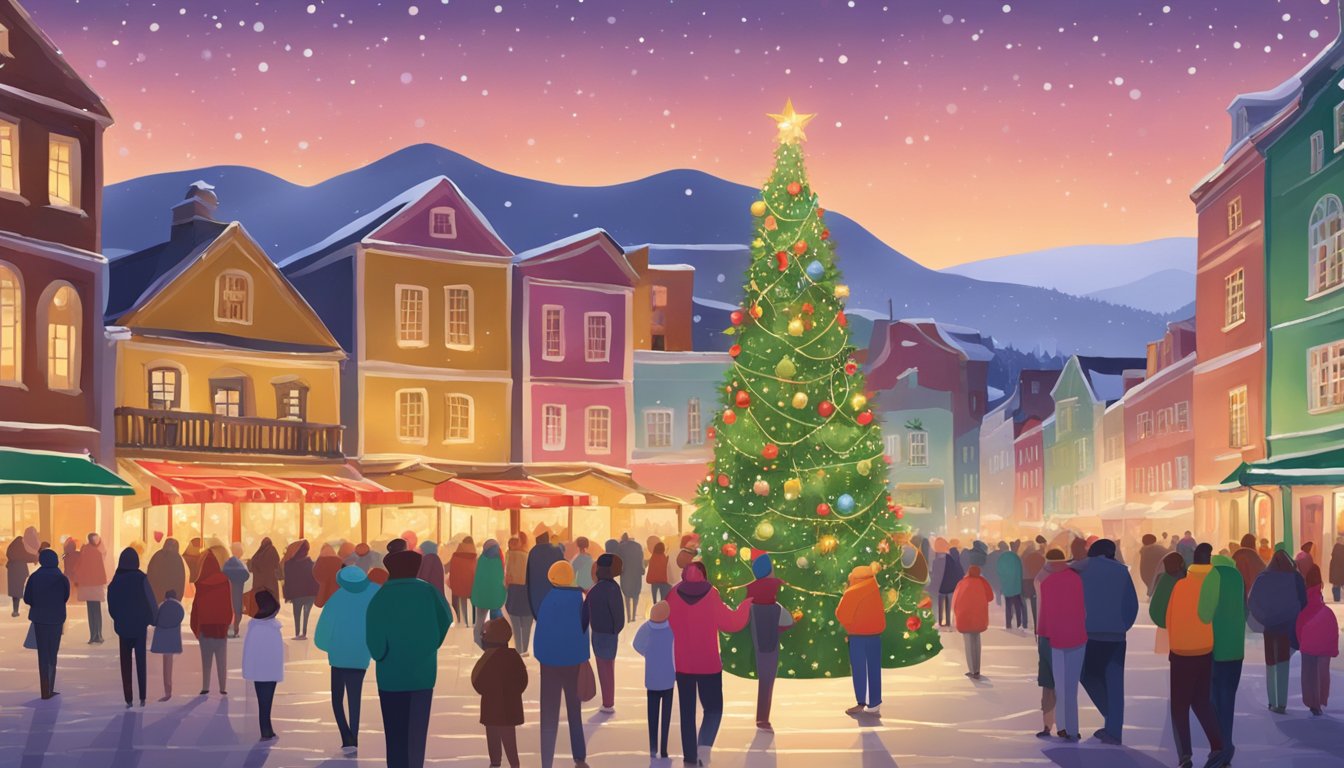
In Costa Rica, the Christmas season is a vibrant tapestry of lights, parades, and religious observations, with each event adding to the nation’s festive spirit.
Festival De La Luz
The Festival de la Luz (Festival of Lights) in San Jose inaugurates the Costa Rican Christmas with a magnificent display of lights.
Thousands gather to watch as floats, bands, and marchers create a luminous spectacle, which usually occurs on the second Saturday of December.
Tope and Horse Parades
The Tope Nacional de Caballos, a grand horse parade, showcases a procession of riders and their horses through the streets, often on December 26.
It’s an iconic event where the animals and their hand-painted oxcarts are adorned for the celebration.
Christmas Eve and Midnight Mass
On Christmas Eve, families come together to attend the Misa de Gallo (Midnight Mass), reflecting the country’s deep-rooted Catholic traditions.
This is a time of harmony where the birth of Jesus is celebrated, and the Nativity Scene or ‘Pasito’ is often the central decorative feature in homes.
Daytime Celebrations and Public Events
During Christmastide, public events abound, from festive parades with colourful floats to fiestas and rodeos (corridas).
One can find celebrations in the form of San Nicolás distributing gifts or vibrant gatherings with traditional music and dance.
The Nativity and Religious Observance
The Nativity is pivotal in Costa Rican Christmas, where scenes depicting Mary, Joseph, and baby Jesus in the manger are prevalent.
The term Niño Dios (Child God) is fondly used, and the installations range from simple home setups to elaborate displays at churches.
New Year’s Eve Traditions
To usher in the New Year, Costa Ricans engage in the tradition of eating 12 Grapes at midnight, one for each chime, to signify hopes for the upcoming months.
Large parties, fireworks, saying “Feliz Navidad” (Merry Christmas) and joyfully welcoming the new year are customary.
Culinary Traditions
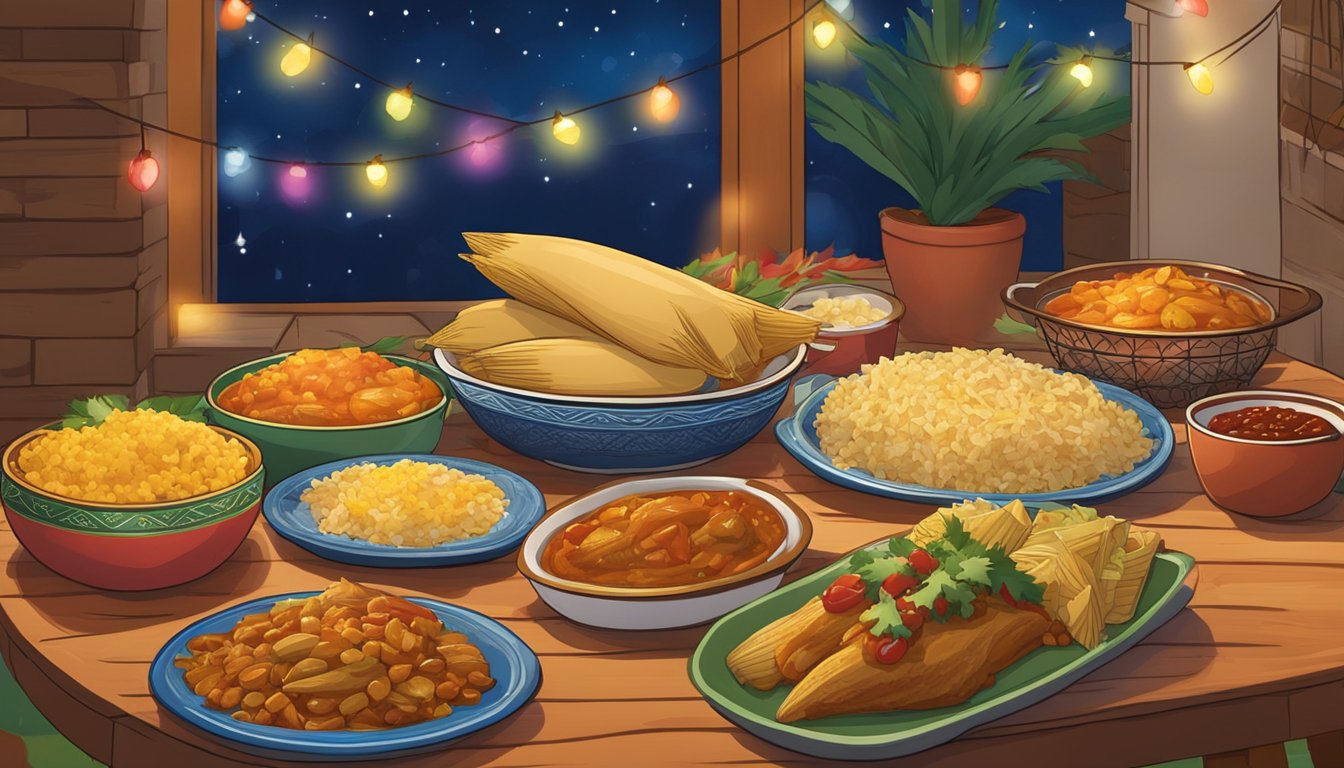
Celebrations of Christmas in Costa Rica are rich with culinary traditions that are both vibrant and flavorful. These traditions include various foods and beverages specific to the holiday season, as well as cherished sweet treats and desserts eagerly anticipated throughout the year.
The culminating point of these traditions is the elaborate Christmas dinner that gathers families and friends around the table.
Christmas Foods and Beverages
Tamales are one of the most emblematic Christmas foods, often filled with pork meat, rice, vegetables, and sometimes chicken, wrapped in banana leaves, and steamed to perfection.
This staple dish is a labour of culinary love and a must-have at any Costa Rican Christmas gathering.
Christmas drinks are also central to the festivities.
Rompope, similar to eggnog, is a traditional beverage that’s rich, creamy, and spiced, sometimes spiked with rum for added warmth.
Another popular choice is rum punch, a fruity concoction that often incorporates a variety of fruits and is savoured by adults during holiday celebrations.
Sweet Treats and Desserts
The dessert table is a delightful array of pastries and cakes, each with its unique place in Costa Rican Christmas lore. Here are a few highlighted sweet treats:
Christmas Cake: known for its dense texture with dried or candied fruits, nuts, and hints of rum.
Tres Leches Cake: a moist and rich confection that features three types of milk.
These desserts not only satisfy the sweet tooth but also signify the sweetness and joy of the holiday season.
Christmas Dinner
The Christmas meal is a grand affair, with families typically serving:
Roast Pork: Often the centrepiece of the Christmas dinner, prepared with a variety of seasonings for a flavorful and festive main course.
Mashed Potatoes: A typical side dish that complements the taste and richness of the roast pork.
Decorations and Symbolism
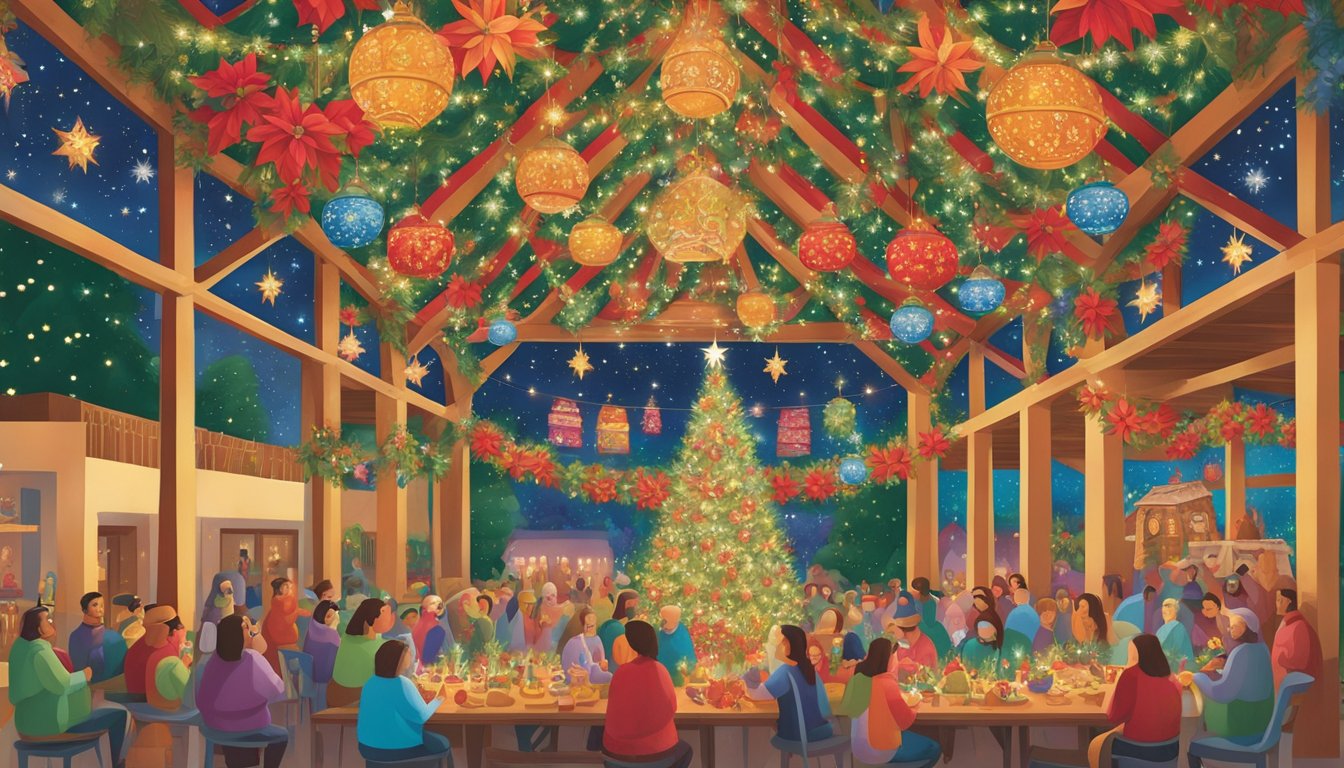
In Costa Rica, the Christmas season is marked by vibrant and symbolic decorations adorning homes and streets. These decorations are thoughtfully crafted to reflect a mix of cultural and religious significance that is integral to the holiday’s observance.
Home and Street Decor
Christmas Trees: Costa Rican homes often feature Christmas trees as a centrepiece of the holiday decor.
Families traditionally use fragrant cypress trees, sometimes in place of fir trees, which are adorned with a variety of lights and ornaments.
Ornaments: Ornaments in Costa Rican Christmas decorations include bright lights, along with handcrafted items and locally sourced materials such as red coffee berries.
These reflect the nation’s appreciation for its natural wealth and cultural heritage.
Public and Religious Displays
Downtown San Jose: During Christmas, the streets of Downtown San Jose come alive with the Festival de la Luz, a festival that showcases a magnificent display of lights, contributing to the communal spirit of the holiday.
Nativity Scene (Portal or Pasito): Public spaces and churches often feature elaborate nativity scenes, which are referred to as “portals” or “pasitos”.
They are more than mere decorations; they are a focal point for religious devotion and community gathering.
Gift-Giving and Santa Claus
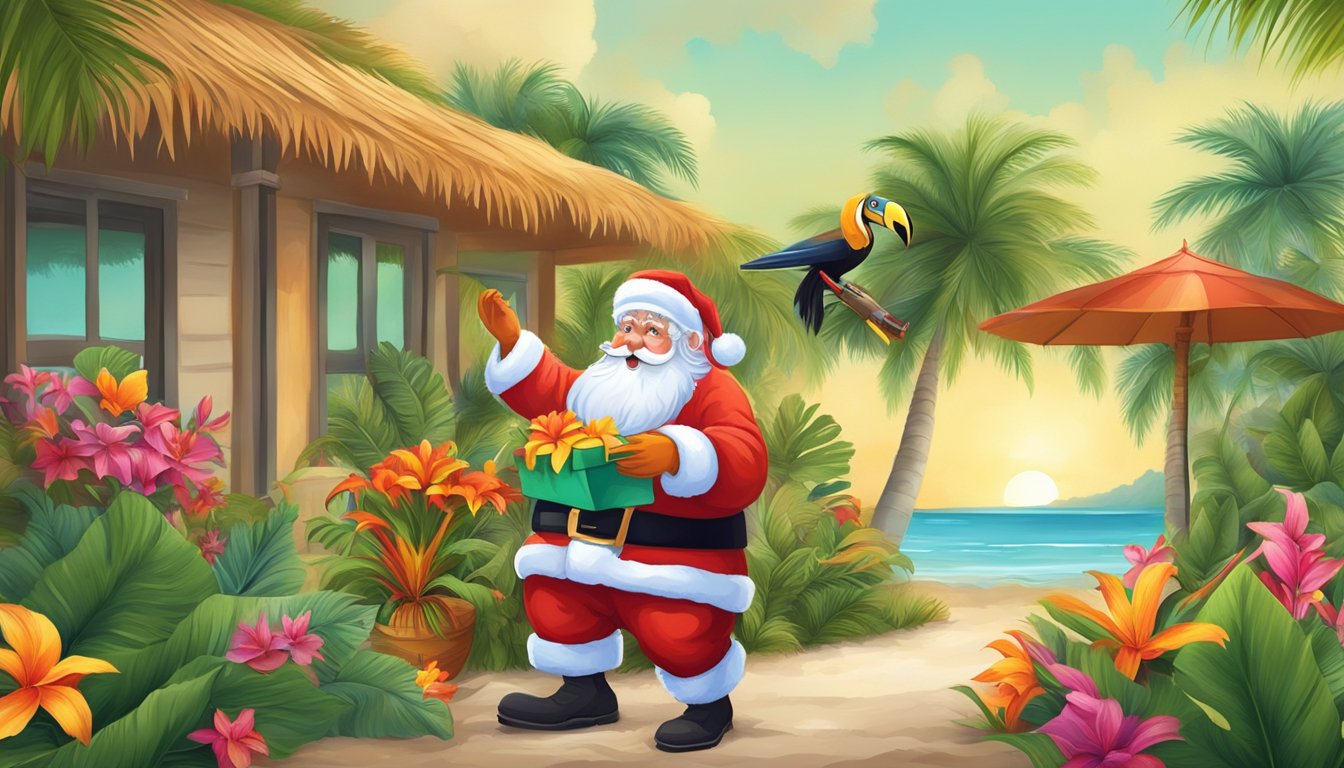
In Costa Rica, the tradition of gift-giving during the Christmas season carries its own unique charm.
Unlike many Western cultures where Santa Claus is the central figure associated with delivering presents, in Costa Rica, it is often the Baby Jesus, or Niño Jesús, who is believed to bring gifts to children.
In some families, however, the role of gift-givers may be attributed to Santa Claus, also known as San Nicolás or Colacho, or even the parents themselves.
Gifts are usually exchanged and opened on Christmas Eve, adding to the special nocturnal celebration, which holds significant importance in Costa Rican culture.
The anticipation culminates after the baby Jesus figurine is placed in the nativity scene, signifying his arrival and the moment children receive their presents.
The Three Wise Men, also referred to as the Magi, play a part in extending the season’s festivity.
Costa Rican Christmas celebrations do not officially conclude until January 6th, known as the Day of the Magi, commemorating when the Three Wise Men are said to have greeted the baby Jesus.
In Costa Rica, the focus during the Christmas season remains heavily centered on family and tradition, rather than on the commercial aspects of gift-giving, thus the gifts exchanged are often more modest, with toys and other gestures of affection that strengthen familial bonds.
Cultural Activities and Entertainment
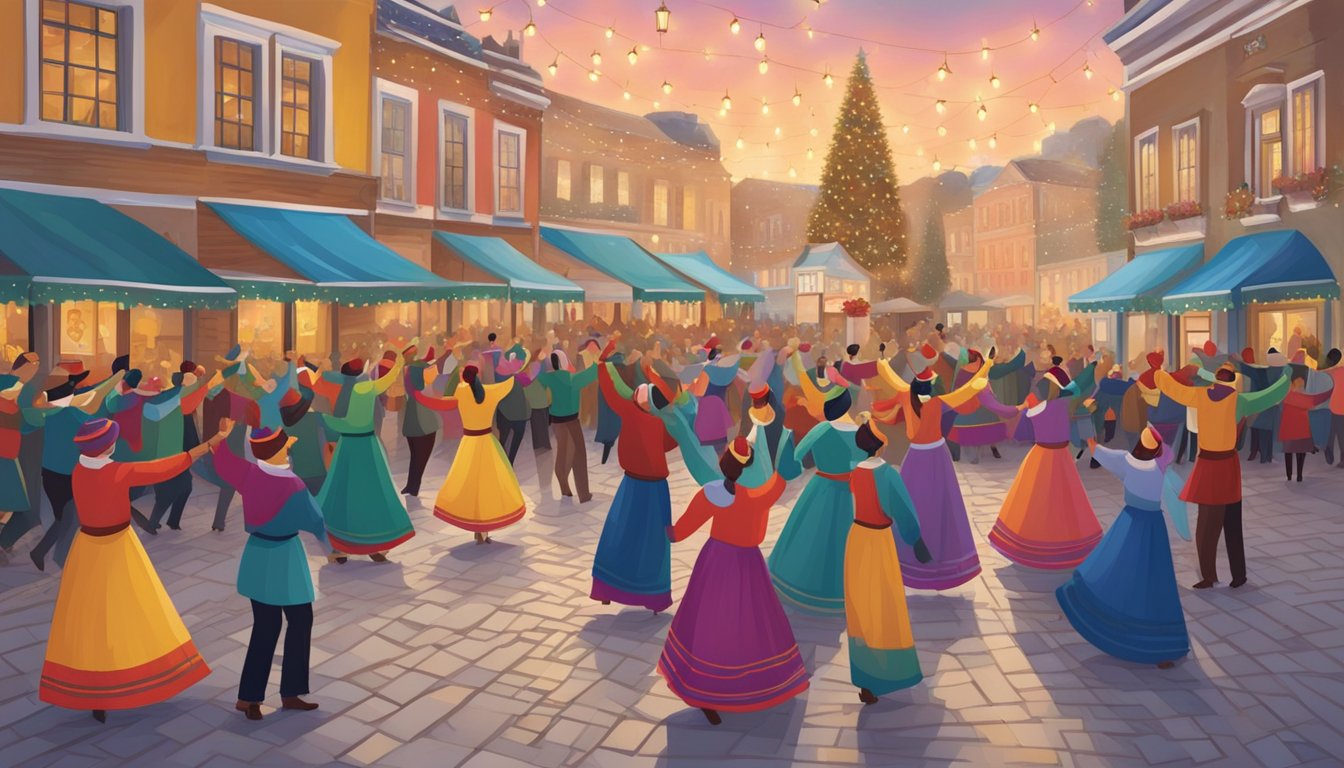
During the Christmas season in Costa Rica, vibrant cultural activities and entertainment play a central role.
From the thrilling bullfights and rodeos to the rhythm of music and dance that fill the air, each event contributes to the festive spirit.
Artisan markets bustle with activity, offering a display of traditional crafts, while family and community gatherings foster a sense of togetherness.
Theatrical productions and skits recounting the nativity story bring the essence of Christmas to life.
Bullfights and Rodeos
Costa Rican Christmas festivities include bullfights and rodeos, which are a testament to the country’s ranching traditions.
Unlike bullfights in other cultures, Costa Rican bullfights are less about combat and more about demonstrating skill and bravado, as the toreros attempt to evade the bull without harming it.
Rodeos feature bull riding and other ranch-style competitions, often accompanied by festivals and fairs.
Music and Dancing
Music is an integral component of the holiday season, with musicians and bands performing a range of styles, from traditional Christmas carols to lively Latin rhythms.
Dancing is common at parties and public celebrations, especially during events like the Festival de la Luz, where illuminated floats are matched with rhythmic melodies, creating a breathtaking ambience of celebration.
Artisans and Markets
Handcrafted items such as hand-painted oxcarts and intricate pasitos, which are miniature nativity scenes, are prevalent at Christmas markets.
Artisans take pride in their work, contributing to the diverse shopping experience for both locals and tourists.
These markets are also a place to savour festive menus, with a variety of local delicacies available.
Family Gatherings and Socializing
Family is at the heart of Christmas in Costa Rica; it is a time for gatherings and socializing, where homes open up to loved ones, often culminating in large, communal feasts.
These family parties are full of joy and often extend to the wider community, reinforcing the value of connection and celebration during the holiday season.
Christmas Plays and Skits
Plays and skits retelling the biblical story of Mary, Joseph, and the birth of Infant Jesus are commonly enacted during this time.
Performances often feature characters such as the Wise Men and Colacho (devil-like figure), bringing the Nativity narrative to the community.
These plays are not just a form of entertainment; they are also a cultural expression of the Christmas story.
Frequently Asked Questions
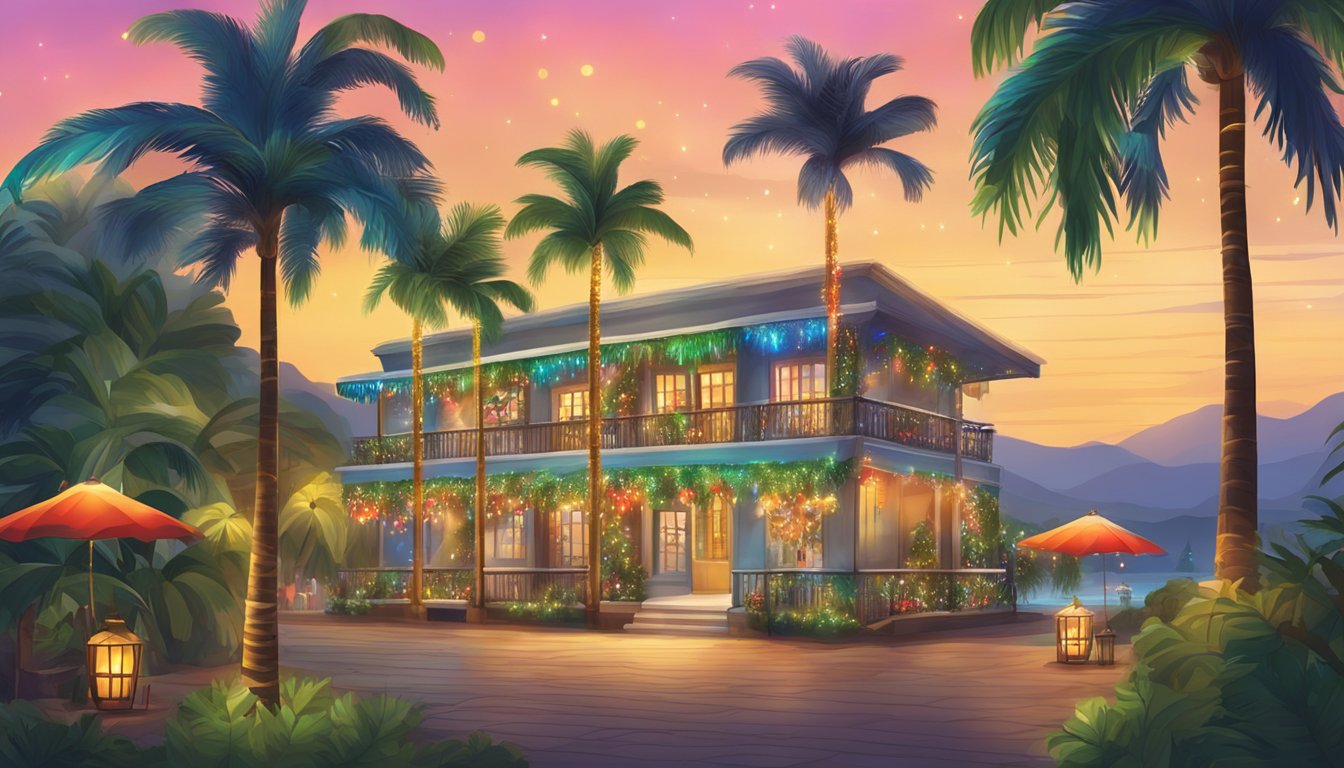
What are some traditional Costa Rican foods enjoyed during Christmas?
Typically, Costa Ricans savour dishes such as tamales, which are steamed corn dough stuffed with meats, rice, and vegetables and enjoyed as a staple Christmas meal. Sweet pastries and eggnog, often spiked with rum, known locally as ‘rompope’, are also popular.
How do Costa Ricans typically decorate for Christmas Day?
Costa Ricans often decorate with vibrant cypress trees adorned with lights and ornaments. Nativity scenes, called ‘pasitos’, are also a significant part of the Costa Rican Christmas decor.
What unique events or celebrations occur in Costa Rica during the Christmas season?
The season is marked by festive parades, including the ‘Festival de la Luz’, notable for its elaborate floats and exuberant street performances.
Another event is ‘El Tope’, a traditional horse parade showcasing skilled riders and prancing horses.
What weather can visitors expect in Costa Rica over the Christmas holidays?
Visitors to Costa Rica can expect a tropical climate with relatively dry weather in most parts of the country during December. The season is generally sunny and warm, making it an ideal time for exploring beaches and outdoor activities.
Which locations in Costa Rica are popular for spending the Christmas holiday?
Popular locations for Christmas holidays in Costa Rica include the capital city of San José, known for its festive ambience, and coastal towns like Tamarindo and Jacó, where people often retreat to enjoy the beaches.
Can you describe some Christmas traditions that are unique to Costa Rica?
One unique tradition is the ‘Portal’, an elaborate and often artistic depiction of the nativity scene, which is a focal point in homes.
Additionally, the ‘Misa de Gallo’, or Midnight Mass on Christmas Eve, is a deeply ingrained religious practice where families unite for worship.

